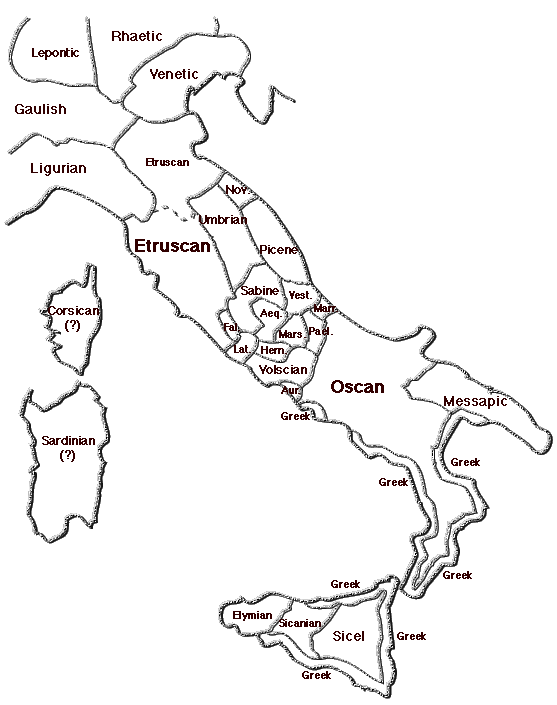Language Map of
Ancient Italy

Abbreviations:
Aeq.- Aequian; Aur.- Auruncan; Fal.- Faliscan; Hern.-
Hernican; Lat.- Latin; Marr.- Marrucinian; Mars.-
Marsian; Nov.- Novilara; Pael.- Paelignian; Vest.-
Vestinian;
Notes:
The lower Po valley (marked off from Etruscan by a dotted line)
was colonized by Etruscans from 600-400 B.C. and adopted their
language. Celtic-speaking Gauls (Senones) then occupied the area until
the Roman conquest. It is not known what ethnic group originally
existed in this area. Livy mentions the Euganei, who lived between the
head of the Adriatic and the Alps until driven out by the Veneti; and
the language of the Novilara stele cannot yet be affiliated with any
historical group.
No inscriptions survive of the indigenous languages of Sardinia
and Corsica: though colonial inscriptions from these areas (in
Phoenician and Etruscan respectively) have been found.
The use of the term "Ligurian" is confusing, since it is used both
for a pre-Indo-European substrate language whose chief evidence is
place names, as well as an Indo-European language (not Celtic or
Italic) from names in an inscription near Genoa. The language of the
historical Ligurians was probably the second of these. Also sometimes
lumped in with Ligurian are the Lepontic inscriptions of lakes Como,
Maggiore, Lugano, and d'Orta.--which are Celtic.
©1999 C.Salvucci. All Rights Reserved.
Evolution | Viteliu